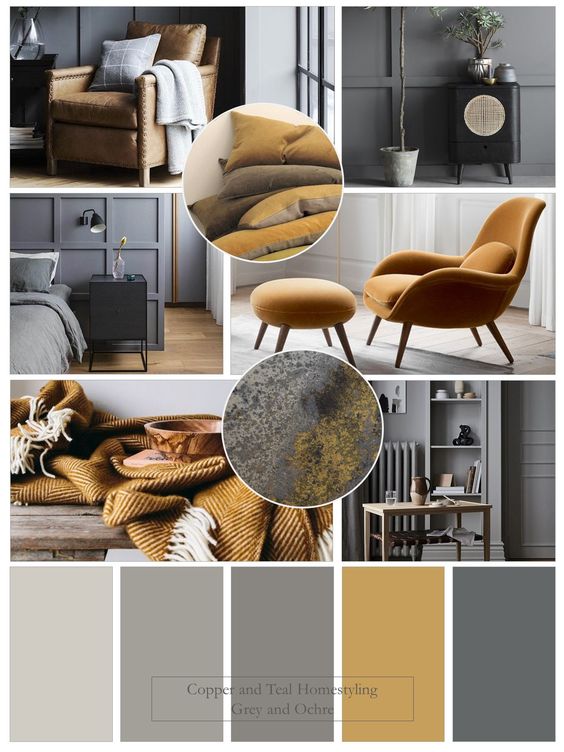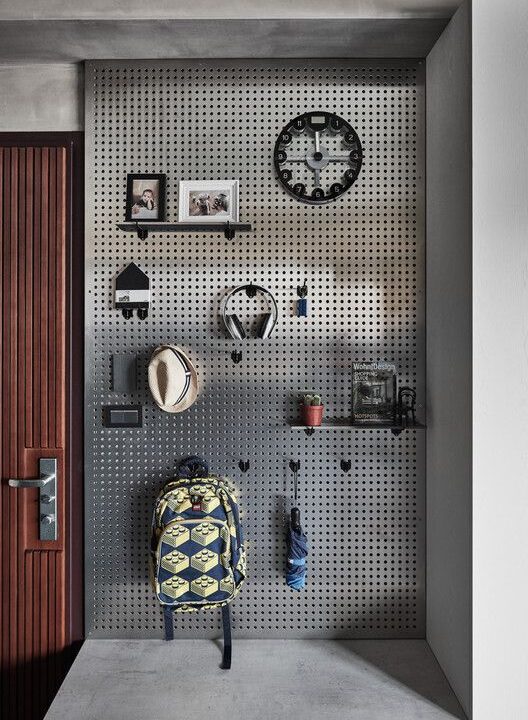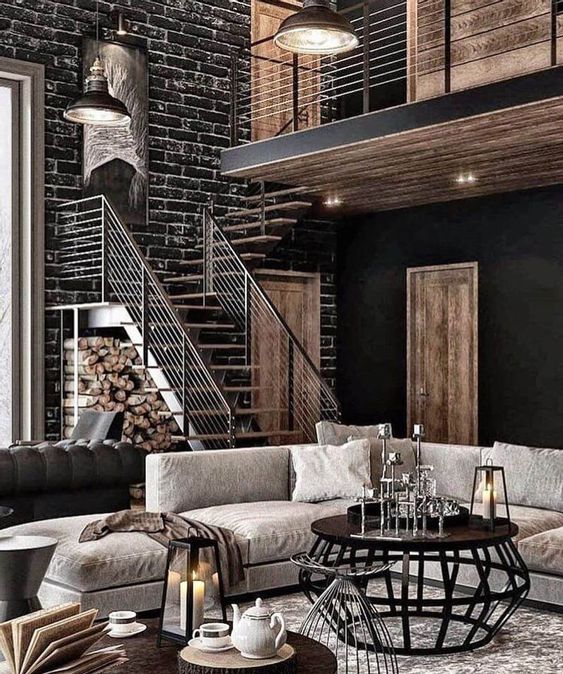Industrial Design Style
Industrial style often means raw materials and masculine details, however, we can always soften the atmosphere using materials like faux fur, wool, or leather. These are considered warm materials that will create a soft and cozy atmosphere even if you are surrounded by brick walls.
If you are a fan of Industrial style you can use materials such as micro cement as a flooring option, which is very durable and looks amazing, for the walls you can use 3D murals and have a statement look with a big picture of your favorite city, or you can use wallpaper of brick wall or decadent walls. In the market, you have plenty of choices from a wide range of prices.
The lighting should be warm white if you want to create a cozy atmosphere. From statement pendants in black iron to mat metallic options in the market you can find the right lighting for you, the new hot trend is the mix of materials like leather, metal, and glass, all in one piece, they are beautiful and bring the wow factor to your space.
Below you can find our choice for Industrial Style, all the pieces are available from our suppliers.
The 10 Essentials:
- Rough brick walls.
- Concrete or wood floors.
- Large, steel windows, or mirrors, where you can use and abuse steel.
- Raw wood furniture or mat look
- Wool, faux fur, and leather are essentials to complement the look
- The Tones can be from neutrals (white, black, grey) to more earthy (brown, green, mustard). the neutrals will create a more cold look, while the earthly will make the space look and feel warmer.
- Cork (can be used in a lamp or a decoration element)
- Use and abuse secondary lighting to create a more relaxed and cheerful atmosphere
- Mix patterns – Use ethnic or vintage patterns
- Big scale Decoration- Bigger and fewer elements will create a statement look
Industrial design styles – Celebrations of raw beauty
the industrial design draws attention to raw and building materials to celebrate their manmade beauty. Most of the materials featured in this style can be mass-produced and have a historical quality to them. Items may be created to look like they’re from a factory or even repurposed from an industrial environment to accentuate the beauty of working machines and aspects of engineering. Where other interior design movements hide the components of a building’s skeleton, the industrial design celebrates them, revealing the beauty of exposed brick walls, metal piping, and other raw elements.
Features of industrial decor
Because industrial design honors human engineering and building materials, most of the rooms created in this style will have certain key identifiers, including:
- Exposed brick or stone walls
- Exposed beams, pipes, and ducts
- Exposed rafters
- Frequent use of metal, wood, and stone
- Vintage accessories
- Distressed finishes
- Building-themed accessories
A history of industrial design
With modern construction’s ability to create a finished and pristine look in any living space, you may wonder why industrial design seems to turn back the clock and reveal the messier skeleton of your home – in the past, exposed pipes may not have been touted as a good decor choice, but now they have featured centerpieces in the home. We’ll explore how the trend began and become the popular style it is today. Knowing the history and development of this movement could shed light on its philosophies and design choices.
The early days
As the name suggests, the industrial design movement was born during the Industrial Revolution, which took place between the late 1700s and mid-1800s. As Europe began mass-producing goods and constructing bigger and sturdier buildings, its citizens admired the capabilities of mankind. Nowadays, owning a handmade item can be luxurious, but in the days of the Industrial Revolution, machine-made goods were in vogue. Not only that, but according to The New York Times, many people even thought of the mechanized culture as a “new divinity.”
By the late 1920s, the world had entered the Machine Age, so named for the boom of industrial construction and innovation. During this time, society transitioned from being dominated by rural communities to one ruled by urban centers.








